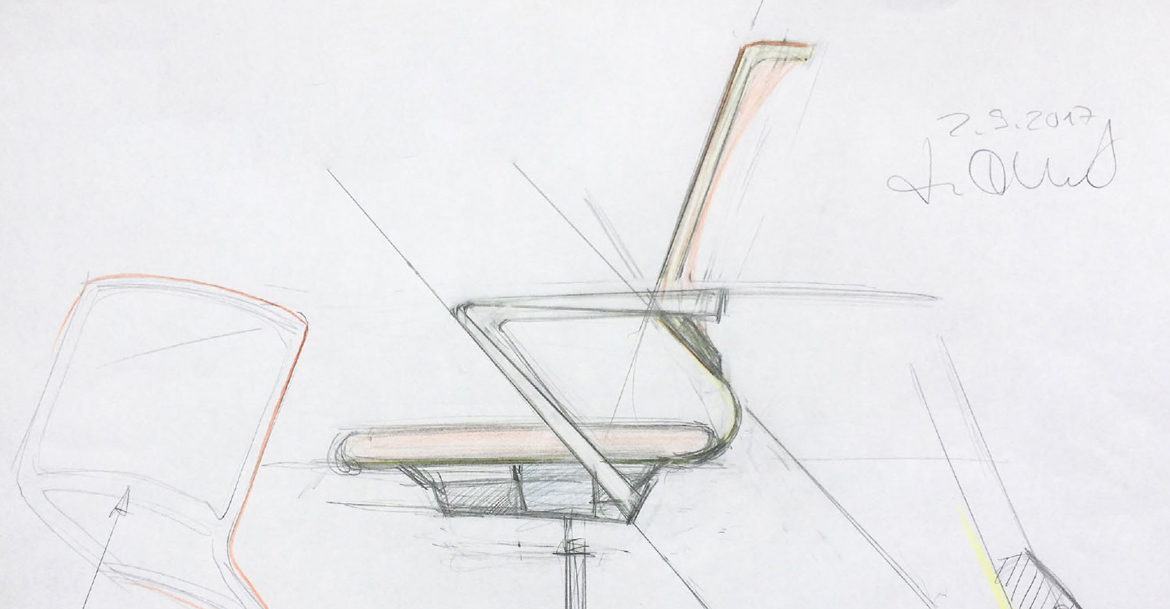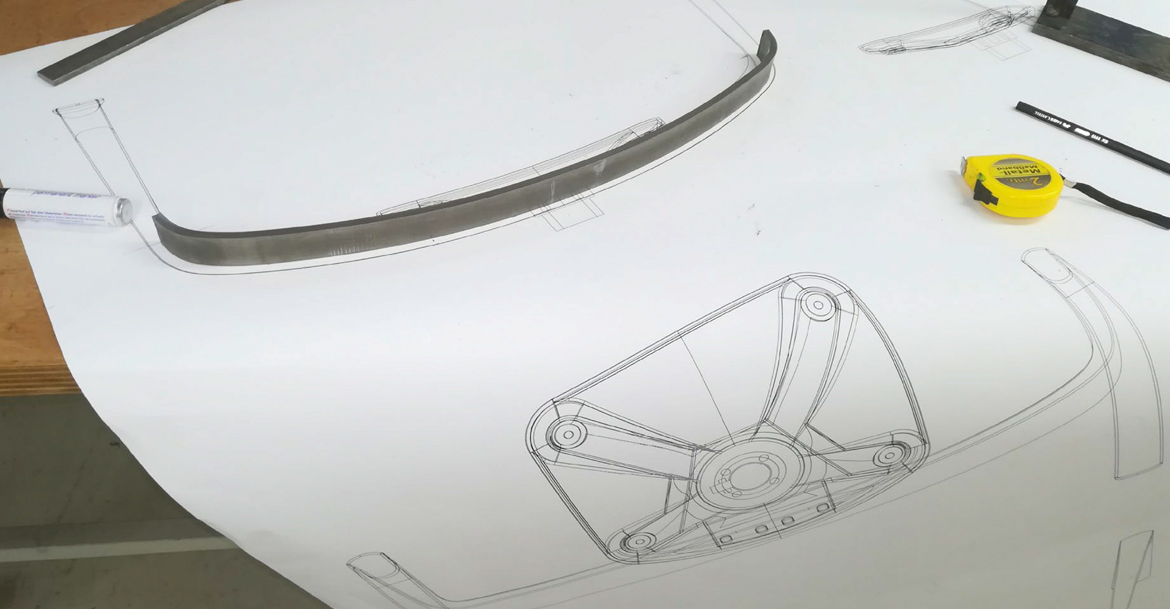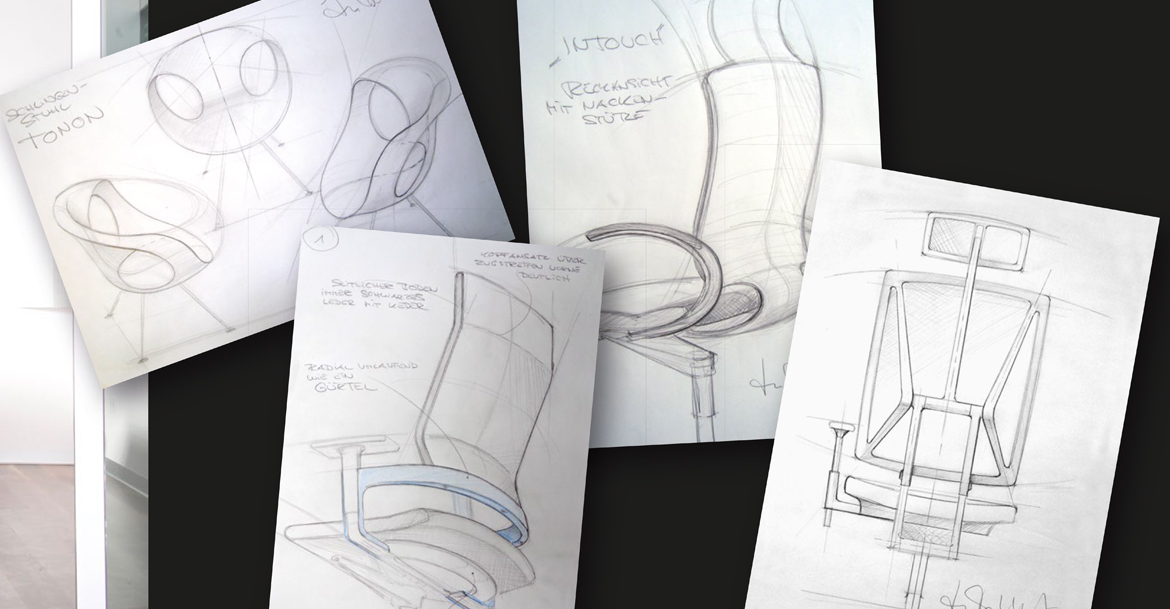The Making of Mavic: How one designer crossed over into an entire new category of chairs
When Martin Ballendat and his team were commissioned to design a chair, they took to the work with zest. Looking to do something more (and different) than the usual aesthetic of the popular T-armed task chair, their team was primed to create a chair visually distinct in its minimalism — but still functionally robust.
With over 37 years in office furniture design, Martin’s studio has taken notice of how the world of work is changing radically. In every regard, it’s become more agile. Work patterns and tasks require more agility. Employees often shift between collaborative and solo tasks multiple times a day. Plus, today’s workers are increasingly choosing contract, freelance, remote and hybrid roles. They’re on the go, hopping in and out of the office at unpredictable rhythms. Martin realized that his new design should offer less, not more. It should be light scale with a bullseye focus on only the most essential functions and not compromise on comfort.
This vision
So how do you bring levity and energy to places where we work in focused sprints? The answer for Martin started with a vision: a single Z-line. The chair’s defining line is drawn through its arms in a single, continuous frame, making the letter “Z.” A sharp-cornered, continuous Z-frame is new and different and stands apart from the round-cornered T-armed task chairs. It provokes interest.
But there were inherent challenges. Martin wondered, with this frame, how could we build a back that would provide comfort and flexibility? And, what essential functionality do we need to ensure agility without upsetting the minimalist aesthetic?

Martin attributes his vision of a minimal chair built around a single defining line to his German design philosophy of reducing to the essential. To Martin, reduction makes sense economically and environmentally. It also makes sense for A&D and end users. Employees who want quick comfort and ease of use prefer “essential” over “robust.” At a time when people fight sensory overload, decision fatigue and burnout, a chair that sits ready — in the way Martin envisioned Mavic — is an asset to any working space. Free of complicated bells and whistles, anyone can get right to work without fussing with adjustments. Reducing to what’s essential also unlocks strong benefits for A&D. A minimal design is easy to integrate into client spaces. A light-scale chair maintains levity. And in conference rooms, meeting spaces and seminar halls, levity helps power performance.

Above all else, by reducing to the essential, Martin and his team would be forced to make important decisions around what was really needed functionally. And then to only build that.
The design
One primary engineering challenge was the flexibility of the back. The arms on Mavic would be sharp rather than round, and the Z-line makes a longer curve than the line of a typical task chair. The uniqueness of both features brought inherent difficulty to achieving the desired level of spring or bounce when sitting. The arms had to recline as the user reclined, and the curve had to stretch the chair’s tension mesh back just so to provide optimal lumbar support.

Another challenge Martin faced was balancing the sharpness and drama of the Z-line with features that evoke comfort. How could Mavic stay grounded in its light-scale design while inviting use? The answer was a tapered seat pan with a perfectly plush cushion — something you typically find on all-day task chairs.
Achieving a flexible back curve with fixed arms, lumbar-supporting tension mesh and a balanced design within a Z-frame required multiple iterations and ongoing creative engineering. But Martin knew that advanced comfort set upon sharp design would make the chair memorable and different. This “Z” would be a line worth striving for.
The functionality
Mavic would have its flexible back and arms, lumbar-supporting tension mesh and tapered seat cushion. But how to define the essential functionality that would complete the chair, making it fit for agile spaces and workflows? What adjustability would allow Mavic to keep up and provide flexibility that marks modern work?
For one, the come-and-go employee of our growing gig economy needs something easy to use. The chair must sit ready and provide immediate comfort. And because workflows are hybrid in our agile world, the chair must support both adaptively. It must not only provide comfort for long hours but also energy for teamwork. With these considerations in mind, Martin and his team wanted a weight-activated mechanism to power Mavic — a mechanism complete with four essential functionalities: seat-height adjustment, recline tension override, tilt limiter and seat slider.
- The weight-activated mechanism provides immediate comfort to the user. When they sit, Mavic responds by automatically adjusting recline tension to support their body, eliminating the complication of extra levers and knobs.
- With height adjustability, users could adjust the seat to find that ergonomic 90° angle in the knees.
- The recline tension override is a mechanism that allows users to override the natural tension in the chair’s flexible back. Increasing the tension sets the chair more upright for a more engaged posture. Loosening it allows for a more relaxed posture. Different settings on this spectrum cater to different workflows.
- For users who prefer more or less movement through the back, the tilt limiter would deliver. It allows the user to set the range at which the chair’s back reclines.
- A seat slider serves a simple purpose: slide the seat backward and forward to create one to two inches of space between the cushion and the back of the knee. The space relieves any pressure in this area.
Notice Martin and his team didn’t build in adjustable arms. Instead, the arms recline as the user reclines. The flexible back was finely engineered to afford this subtle effect — one that provides extra comfort. With the arms part of the single continuous frame, the beauty of Mavic’s minimalistic design is maintained visually and functionally.
The agile employee doesn’t lose any time or energy adjusting Mavic. Mavic sits ready to get to work.
Ready to design?
Build your Mavic on ChairBuilder, the industry’s leading visualization tool.
